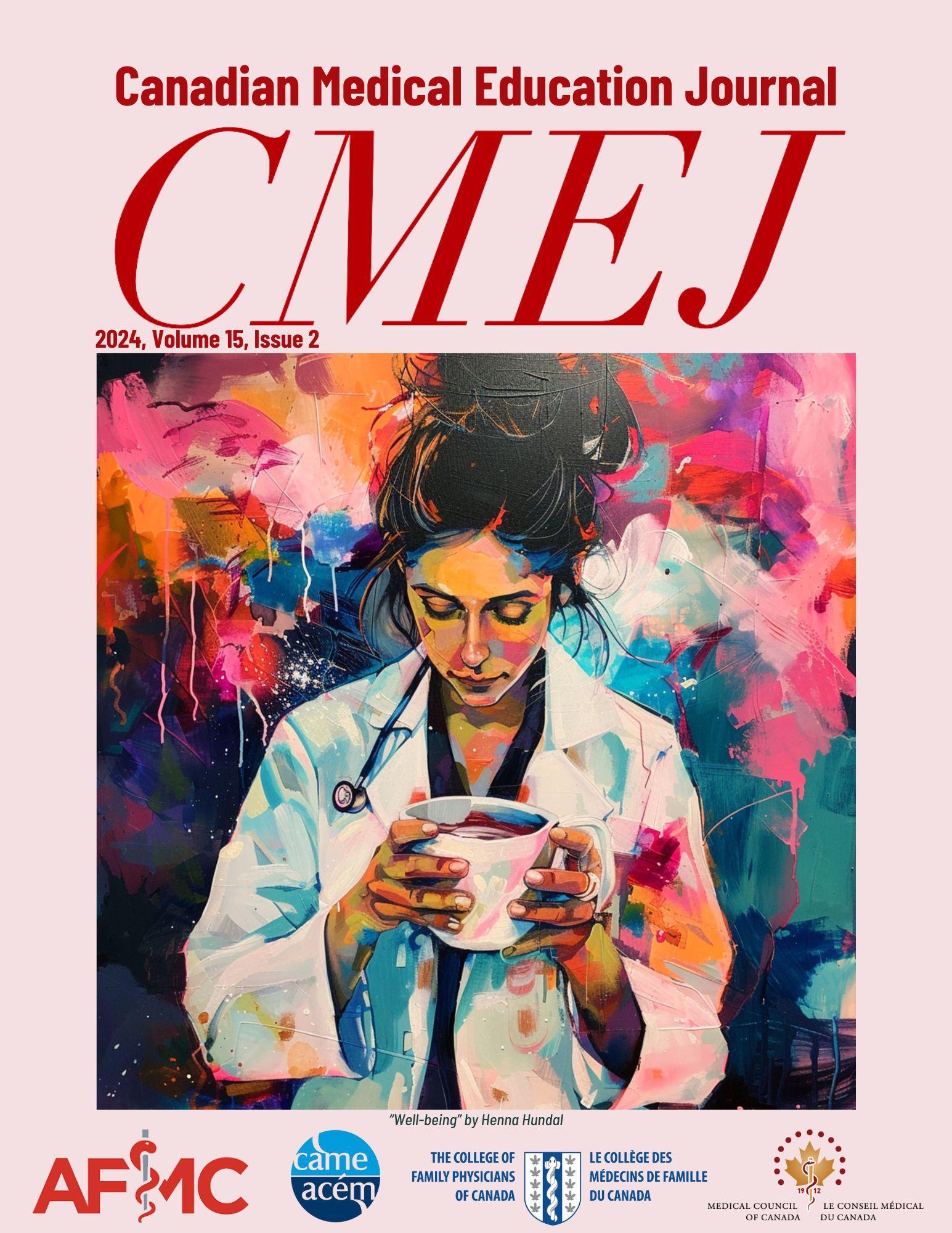Abstracts
Abstract
Background: Canadian data suggests that Black candidates may be less successful than other groups when applying to medical school. We sought to comprehensively describe the racial and/or ethnic identity, gender identity, sexual orientation, and ability of applicants to a single Canadian medical school. We also examined for an association between success at each application stage and applicant gender and racial identity.
Methods: Class of 2024 applicants to a single Canadian medical school were invited to complete a demographics survey. The odds of achieving each application stage (offered an interview, offered a position, and matriculating) were determined for each demographic group.
Results: There were 595 participants (32.4% response rate). The demographics of the applicant pool and matriculating class were similar. There was no difference in interview offers or matriculation between BIPOC and white candidates. Cisgender men were overrepresented in interviews compared to cisgender women (OR 0.64; 95%CI 0.43-0.95; p = 0.03) but not in matriculation. BIPOC cisgender women received more interview invitations compared to other groups (OR 2.74, 95%CI 1.20-6.25; p = 0.02).
Conclusions: Differences in applicant success for differing demographic groups were most pronounced being offered an interview.
Résumé
Contexte : Des données canadiennes portent à croire que les candidats noirs peuvent avoir moins de succès que d'autres groupes lorsqu'ils postulent à une faculté de médecine. Nous avons cherché à décrire de manière exhaustive l'identité raciale et/ou ethnique, l'identité de genre, l'orientation sexuelle et les capacités des candidats à une seule faculté de médecine canadienne. Nous avons également cherché à établir un lien entre la réussite à chaque étape de la candidature et le sexe et l'identité raciale du candidat ou de la candidate.
Méthodes : Les candidats de la promotion 2024 à une faculté de médecine canadienne ont été invités à répondre à une enquête démographique. Les chances d'atteindre chaque étape de la candidature (entrevue offerte, place offerte et inscription) ont été déterminées pour chaque groupe démographique.
Résultats : Il y a eu 595 participants (taux de réponse de 32,4 %). Les caractéristiques démographiques des candidats à l’admission et des étudiants admis étaient similaires. Il n'y avait pas de différence entre les candidats blancs et les candidats autochtones, noirs et de couleur (PANDC) en ce qui concerne les offres d'entrevue ou les admissions. Les hommes cisgenres étaient surreprésentés dans les entrevues par rapport aux femmes cisgenres (OR 0,64; 95%CI 0,43-0,95 ; p=0,03) mais pas dans les admissions. Les femmes cisgenres appartenant au groupe des PANDC ont reçu plus d'offres d’entrevue que les autres groupes (OR 2,74, 95%CI 1,20-6,25 ; p=0,02).
Conclusions : Les différences les plus marquées dans la réussite des candidats à l’admission parmi les différents groupes démographiques étaient quant aux offres d’entrevue.
Download the article in PDF to read it.
Download
Appendices
Bibliography
- Ruzycki SM, Roach P, Ahmed SB, Barnabe C, Holroyd-Leduc J. Diversity of physicians in leadership and academic positions in Alberta: a cross-sectional survey. BMJ Leader. 2022;January 2022. https://doi.org/10.1136/leader-2021-000554
- Dhalla IA, Kwong JC, Streiner DL, Baddour RE, Waddell AE, Johnson IL. Characteristics of first-year students in Canadian medical schools. CMAJ. 2002;166(8):1029-35.
- Lucey C, Saguil A. The consequences of structural racism on MCAT scores and medical school admissions: the past is prologue. Acad Med. 2020;95(3):351-6. https://doi.org/10.1097/ACM.0000000000002939
- UME UoT. Black student application program 2022. Available from: https://applymd.utoronto.ca/black-student-application-program. [Accessed Mar 24, 2022]
- Medicine CSo. Pathways to Medicine Scholarship Program 2021 Available from: https://cumming.ucalgary.ca/future-students/scholarships/pathways-medicine-scholarship. [Accessed Mar 24, 2022]
- Leduc JM, Kpadé V, Bizimungu S, et al. Black students applying and admitted to medicine in the province of Quebec, Canada: what do we know so far? Can Med Ed J. 2022;12(6):78-81. https://doi.org/10.36834/cmej.72017
- Canada TAoFoMo. 2020 Canadian Medical Education Statistics. Ottawa, Ontario; 2021.
- Constitution Act, 1982: Part 1 Canadian Charter of Rights and Freedoms Government of Canada 1982. updated Sept 28, 2022. Available from: https://laws-lois.justice.gc.ca/eng/Const/page-12.html.
- Ruzycki SM, Roach P, Ahmed S, Barnabe C, Holroyd-Leduc J. Diversity of physicians in leadership and academic positions in Alberta: a cross-sectional survey. BMJ Leader. 2022. https://doi.org/10.1136/leader-2021-000554
- Evans-Winters VE, Esposito J. Other people's daughters: critical race feminism and Black girls' education. Educ Found. 2010;Winter-Spring:11-25.
- Bailey M. Misogynoir in medical media: on Caster Semenya and R Kelly. Catalyst. 2016;2(2):1-31. https://doi.org/10.28968/cftt.v2i2.28800
- von Elm E, Altman DG, Egger M, et al. The Strengthening the Reporting of Observational Studies in Epidemiology (STROBE) statement: guidelines for reporting observational studies. Rev Esp Salud Publica. 2008;82(3):251-9. https://doi.org/10.1016/j.jclinepi.2007.11.008
- RSC 1985 (1985).
- Jones CP. Levels of racism: a theoretical framework and a gardener's tale. Amer J Pub Health. 2000;90:1212-5. https://doi.org/10.2105/AJPH.90.8.1212
- Nixon SA. The coin model of privilege and critical allyship: implications for health. BMC Pub Health. 2019;19(1):1637. https://doi.org/10.1186/s12889-019-7884-9
- Crenshaw K. Mapping the margins: intersectionality, identity politics, and violence against women of color. Stanford Law Rev. 1991;43(6):1241-300. https://doi.org/10.2307/1229039
- Halbesleben JR, Whitman MV. Evaluating survey quality in health services research: a decision framework for assessing nonresponse bias. Health Serv Res. 2013;48(3):913-30. https://doi.org/10.1111/1475-6773.12002
- Collier R. Medical school admission targets urged for rural and low- income Canadians. Can Med Assoc J. 2010;182(8):E327-E8. https://doi.org/10.1503/cmaj.109-3227


